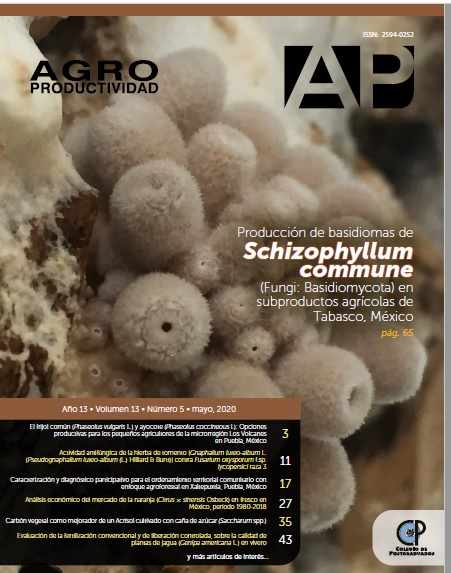Evaluation of the conventional and controlled release fertilization, on the quality of jagua plants (Genipa americana L.) in nursery
Main Article Content
Keywords
Genipa americana, conventional fertilizer, controlled release fertilizer.
Abstract
Objective: Select the type and dose of fertilizer suitable for the best quality, highest accumulation of dry biomass and photosynthetic rate in plants of G. americana L. during the nursery stage.
Design/methodology/approach: A completely randomized experimental design with four repetitions was used. The plants were evaluated for a period of three months in nursery, for which at 20 days of age they were transplanted in 310 cm3 polyethylene tubes using a substrate composed of vermiculite, perlite and peat, which was mixed with Conventional fertilizer (CF) Triple 17 (17N-17P-17K) in doses of 3.3 (low), 6.6 (medium) and 10 kg * m-3 (high), and Osmocote® controlled release fertilizer (CRF) (15N-9P -12K), in doses of 10 (low), 20 (medium) and 30 kg * m-3 (high), plus a control without fertilization. The variables were measured: neck diameter, height, root length, aerial and radical biomass, robustness index (IR), biometric proportionality index (IPB), Dickson quality index (ICD) and photosynthetic rate. The averages were compared by the Tukey test at a 5% confidence level.
Results: The plants of G. americana L. fertilized with Osmocote® in its three doses (high, medium and low) showed the highest growth in all morphological variables; in IR the Osmocote® generated plants of better quality than the control, the IPB only the high dose of Osmocote® was different from the control although it is considered of lower quality; and in the ICD the low and medium doses were better than the control since they are considered of better quality; the photosynthetic rate was better with the application of Osmocote® fertilizer in all its doses than Triple 17 and the control.
Limitations on study/implications: The low dose (10 kg * m-3) of the Osmocote® fertilizer presents a good option to generate plants of G. americana L. since it did not show differences with the high dose, however nutritional deficiencies will be noticed after three months after of the transplant.
Findings/conclusions: With the application of the Osmocote® controlled-release fertilizer in its three doses, plants of G. americana L. are obtained with better morphological attributes, greater biomass accumulation and photosynthetic rate than with the application of the conventional Triple 17 fertilizer.

